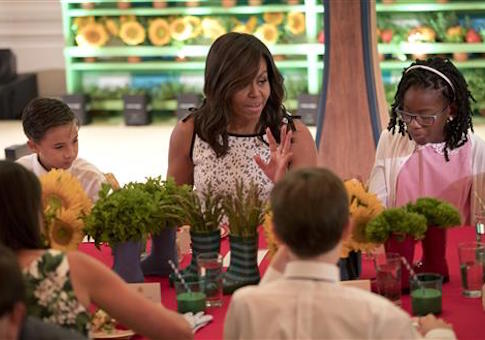
Share On Social!
In working on reducing food waste since new rules went into effect in 2012, School Lunch Advisory Councils (SLACs) are now asking students to help other students eat healthier.
SLACS, which are composed of a food service director, an educator, and two or three students, are using behavioral economics like encouraging students to nudge or encourage other students to consume more fruits and vegetables at lunch.
Montana food directors told The Washington Free Beacon that once the cafeteria put up creative signage like the student’s life-sized version of their coach promoting apples and moved their salad bar, lunch waste decreased by 35 percent.
“Smarter Lunchrooms uses the basic principles of behavioral economics (the influencing factors behind people’s choices and behaviors) to create an environment that makes the healthy choice the easy choice,” the state agency told Free Beacon.
But it doesn’t stop there, the Montana Schools (3.6 % Latino) are also working on healthy eating behaviors as well, making a whole wellness approach to healthier eating and healthy eating choices.
Healthy behaviors around eating and thinking about what you eat and how often are healthy for the mind and body. Latino students are often targeted by large food companies to eat unhealthy junk foods and soda more than their white peers, studies show.
Offering lunch rooms that support students to engage in eating more fruits and vegetables and support efforts of healthier food marketing in schools, may help increase Latino students health and make the healthy choice the easy choice.
To learn more about Latino students school food environments, click here.
By The Numbers
142
Percent
Expected rise in Latino cancer cases in coming years



